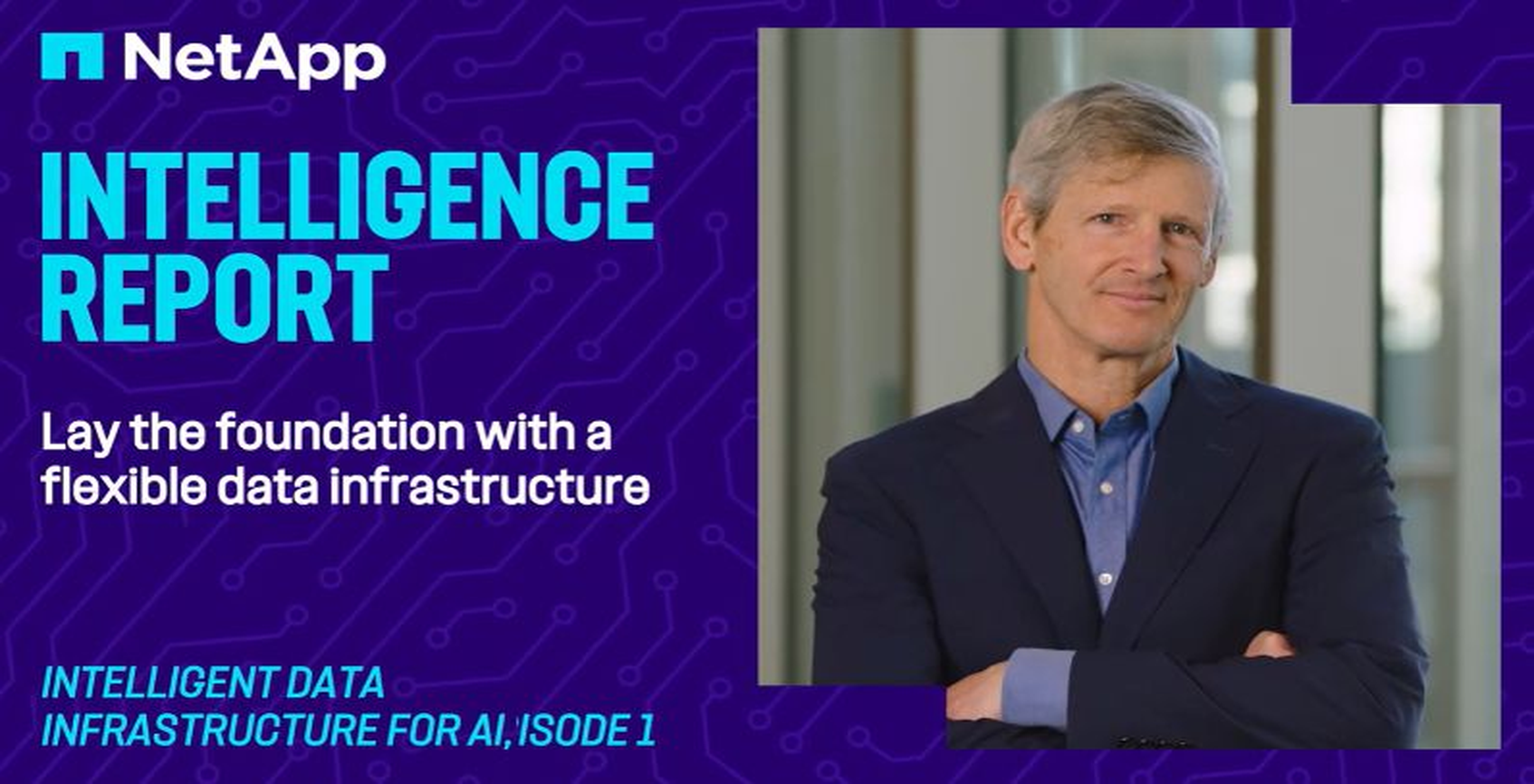Boomi CEO Steve Lucas on Integration and AI innovation
Meet the Experts
Meet the Authors
Key Takeaways
Boomi provides a robust iPaaS solution that enables organizations to integrate applications, databases, and APIs, which is crucial for companies migrating from on-premises systems to the cloud, especially with the impending end of maintenance for SAP ECC in 2027.
The integration and automation of processes are key to innovation, with Boomi emphasizing that effective integration is essential for CIOs to leverage AI and drive business transformation, thus alleviating the challenges of a fragmented application landscape.
Steve Lucas, Boomi's CEO, highlights the importance of security in integration solutions, warning that investing in less secure connectors poses significant risks, while also positioning Boomi as a leader in API management and automation in the evolving AI-driven enterprise landscape.
On one level, the Boomi proposition is an iPaaS offering connectors for SAP, Salesforce, Oracle NetSuite, AWS and 100s more. Founded in 2000, with over 20,000 customers, 800+ global partners and more than 300,000 endpoints, organizations around the globe use Boomi to automate their business through the integration of applications, databases, and APIs to create interconnected processes. An SAP PartnerEdge- Build partner, Boomi’s SAP connectors are amongst the company’s most used from its portfolio.
From another perspective, Boomi’s offering is a crucial one for the enterprise at this point in time. Cloud migration is arguably the most pressing issue today for many SAP Insiders, with SAP planning to end mainstream maintenance of ECC or the ERP Central Component of the SAP Business Suite on December 31, 2027. As CIOs are undoubtedly aware, this is a date little over three years away at the time of writing.
A key part of the SAP cloud discussion is the issue of integration; the enterprise application sprawl today needs connecting solutions as companies move from on-prem systems to the Cloud, with SAP customers pending migration from ECC to SAP S/4HANA.
Explore related questions
These customers have to work with all manners of systems across a variety of instances. Variety is the spice of life, as they say, but users know that the landscape looks and feels fragmented and complex.
Steve Lucas knows this, and acts on it with regards to the Boomi customer case. When explaining what drew him to Boomi, the chief exec explains to SAPinsider that it’s all about connection. “What deeply resonates with me is that people, companies, cultures even, they’re better when they’re connected. When they talk to each other, when they communicate, everything is just better. And there’s that universal truth that deeply resonated with me the moment I heard Boomi – it literally means ‘of the earth’.”
“I have yet to meet a company where connecting things won’t make better outcomes,” Lucas continues. “And that’s just a deep, universal truth.” Bringing this back down to Earth, Lucas says Boomi offers companies “any to any integration”, a phrase which recurs in our chat with the exec. “In this world of connectivity, ‘one-to-one’ connectivity will break your back. It can’t be one to one. It can’t be one to many – it has to be any to any.”
CIOs and the integration challenge
For Lucas, the CIO role is the hardest role in the modern enterprise today. For SAP Insiders, integration is top of tray for CIOs looking for the benefits of AI, business transformation and better data handling. As Lucas reminds us, none of those things can happen perfectly without proper integration between systems. The Boomi message is that integration plus automation equals innovation. The vendor’s strategy is focused on integrating and automating applications, databases, and APIs through a robust, cloud-native integration and automation platform – the Boomi Enterprise Platform. SAPinsiders can benefit from a cloud-first composable architecture in which systems are connected, data is standardized and shared, and processes automated for the entire enterprise using AI.
“We can help you get to SAP S/4HANA without extraordinary expenditure on custom code.”
The problem? CIOs are expected to shed the legacy burden, whilst reducing costs at the same time. Of course, no self-respecting CIO would implement the cheapest ERP or CRM money can buy. But even in possession of the “Porsche or Ferrari of ERP”, as Lucas puts it, cost cutting poses another existential ERP problem.
“They want this high end, “super” car of ERP systems. But when it comes to the tires, let’s get the absolute, cheapest used ones that I possibly can! And that’s generally the integration strategy. I’ll put bad gas in the engine, and I’ll get really bad tires. And then you’re surprised when you have deployment challenges, reliability challenges, cost overrun – the list goes on and on and on.”
The car analogy is a fitting one. When he’s not in the boardroom, Lucas can be found in his garage, tuning and customizing cars to his heart’s content. “It’s a passion that’s run deep for a long, long time, and I’ve tricked my 24-year-old son into hanging out with his old man while working on cars!” Lucas laughs.
“I find beauty in every car I look at. When I look at a car, I don’t just see the exterior. I can’t help but think about the engine inside and the fuel going into it and the air moving through.”
Lucas sees cars as a series of trade-offs that see fit to making a vehicle both economical and reliable. But with his particular passion, the CEO wonders how he can make “the absolute best version” of a car, one as fast, as light and as durable as possible. Naturally, Lucas thinks about companies the same way, wondering how to make them remarkably efficient with use of every drop of performance, while also keeping the reliability and durability of the operation.
“How do you take the horsepower from 200 to 500?” he asks. “There’s so much more capability there than what you’re presented with.” SAP users, he says, are faced with a hyper-fragmented integration landscape for which only the sturdiest, most maneuverable vehicle will suffice. Leaning into the fragmented nature of today’s status quo, the CEO reminds us the average enterprise today has over 360 applications and 1000 plus data sources, proof to him that the fragmentation issue was further compounded in the move from on-prem to the cloud.
Speaking with CIOs, Lucas understands why so many data warehousing projects end in failure: mishandling of said data. The wrong systems are accessed, systems don’t “talk” to each other, and data proves to be too complex, too varied and too poorly integrated.
At risk are companies being able to keep on top of scale, reliability, compliance – and security. “The darker side of having a fragmented integration model is that bad actors want to get at your data. Think about the risk you’re taking if you’re investing in a connector from a company that isn’t focused and obsessed on security 24/7. You’re betting your entire company on that one thing. It’s fraught with risk.”
The Boomi boss believes that as big vendors build competently for a one-to-one instance, customers are led down “the wrong path” into thinking their integration problems are resolved. As he sees it, if the enterprise application giants have truly solved the integration challenge, then why does so much of Boomi’s revenue come from integrating their systems?
AI Innovation
The Boomi mission is clear to Lucas: becoming the number one platform for API management, integration and automation, and data management out there, and removing the digital fragmentation challenge for enterprises when it comes to their SAP and ERP instances.
But that’s just the first part, because then comes a new opportunity to differentiate on technology and achieve outcomes powered by artificial intelligence. Perhaps unsurprisingly, the AI question looms large in our conversation with Boomi’s chief. However complex the situation today is with all things cloud and security, we’re only at the tip of the iceberg when it comes to artificial intelligence within the enterprise space.

Lucas uses another car-related analogy when discussing AI, talking about the invention of the automobile and the subsequent road accidents in its wake.
“Because there weren’t stop signs and stop lights, and we had to invent those things. And with AI, we’ve kind of invented a new vehicle, and we’ve gotta build on-ramps and off-ramps and roads and stop signs and stop lights, and I want Boomi to be part of that.”
This is likely to be reassuring news to conscientious CIOs, and indeed it’s hard to miss the messaging on ethics and safeguards in AI by the likes of SAP and Salesforce. But Lucas also realizes the most basic thing most CIOs want today: to take AI from proof of concept to scale. The AI big bang is here, but most organizations feel unprepared to adopt AI and are unsure where to start. Boomi can help.
First, there’s “AI in the platform”. The Boomi Enterprise Platform is leveraging AI to help customers wrangle apps, databases, and APIs. Boomi “AI agents” such as Boomi DesignGen, Boomi Scribe, and Boomi DataDetective are embedded in the platform to orchestrate and automate entire processes like designing integrations, creating documentation, and staying on top of data privacy. There will also be partner-built AI agents – the first one being Boomi FinTalk powered by Vianai to get instant answers to your most pressing financial questions. And Boomi customers can even build, ground and train AI agents themselves as part of an “agent garden architecture” within the platform.
Then there’s Boomi as a “platform for AI”. The key to this is finetuning what users can do with their large language models, and – again – integration proves vital. An integration platform can take information from hundreds of systems inside an organization, ensuring that this data is the right type of format and model to go into vector databases and LLMs, feeding and then leveraging them for the end user’s benefit.
“So while you’re completing the active integration and automation, we can create a system where you can just ask it, ‘Hey, can you connect my Salesforce to SAP for me?’ But the question you’ll be able to ask it in the near future is, ‘Why didn’t those three invoices run?’”
Lucas believes the “Holy Grail” around business that will present itself soon around large and even small language models is users having a conversation with AI about their business processes.
“I just want to ask my business a question about itself. With business intelligence and analytics, warehouses and semantic layers, people have tried for 30 years to try and get this right. But it’s always the same thing. It’s trying to teach humans to think like a computer instead of teaching the computer to think like a human.”
In other words, a simple question and answer scenario, instead of structured, complicated and pointed queries with only one outcome. Lucas returns to this thinking when discussing the three A’s of Boomi’s strategy for 2024: Automation, APIs and AI. “AI will play a massive role in process intelligence,” he explains with infectious enthusiasm. “If you could ask your system, ‘How does my invoicing process work?’ And boom, boom! It brings to the table hundreds of millions of processes that we’ve built into a model that can tell you exactly how your process works.”
On automation, Lucas argues that CIOs need to choose the right platform for automating processes as they solve their fragmentation woes, citing “millions” of de-identified design patterns in the Boomi platform that help, he explains, with reduction in time to work of 90 percent.
APIs, as the medium for digital exchange, have been powering the App Economy. Now they are the eyes and ears of the “AI Economy”. In other words, the new AI Economy is an API Economy and accelerating the need to create, deploy, and manage APIs at unprecedented scale. Recently, Boomi has doubled down on API management with the recent acquisitions of APIIDA’s federated API Management business and the Mashery assets from the Cloud Software Group.
“Using our API management technology to apply APIs to custom objects within SAP systems so that you can – crazy thought – just leverage Java Developers.” This, he believes, is pertinent to the SAP community, with SAP developer resources making for a “relatively static group of talent” which takes years to train properly. Lucas sees Boomi’s low-code tech offering as helping to remove the risks involved in moving SAP instances to the cloud, risks exacerbated if not enough of the right talent is on board.
A low-code environment can make it easier for Insiders to make quick changes as business processes transform. Process automation can also significantly reduce the time staff need to spend on manual tasks. Innovation, as Lucas sees it, can be said to become democratized for the entire workforce, through automation and an edging away from complex skill sets.
Implementation before revolution
Speaking with Lucas, it’s clear his and Boomi’s vision for the company is that of integration and automation being innovation. The two concepts are interchangeable, with one unable to exist without another. In solving fragmentation, CIOs in the SAPinsider community are freed up to solve more pressing challenges in the enterprise tech space: security, talent development, AI safeguarding, amongst others. The move to cloud, whether public or private, is becoming hard to ignore, especially in the SAP space. As a half billion-dollar company, Boomi is in a good position to achieve its aim of becoming the singular integration and automation platform of choice. It’s also clear Lucas is thinking beyond cloud to the next stage of GenAI in the ERP space.
That AI and digital transformation is impossible without proper integration needs is a message that Boomi’s customer base of manufacturing, financial services, healthcare, retail and high tech should likely take on board.
“With AI, we’ve invented a new vehicle, and we’ve got to build infrastructure around it. I want Boomi to be part of that.’”
Taking the conversation back to SAP S/4HANA Cloud, Lucas mentions that his previous experience at Walldorf ’s finest has given him an understanding of the “deep complexity and dependability” users have on SAP systems.
“We can help them get to that S/4 world without extraordinary expenditure on custom code – without giving up the competitive differentiators that they built in that code.
“Boomi is the company that comes along and looks at that ‘car’, SAP, and goes, ‘We can go faster.’”
Lucas graced SAP a few times throughout his career. While at Business Objects in the early 2000s, SAP acquired the company in 2007. He then returned to the giant in 2009, and left SAP’s Colorado offices as president of SAP Platform & Analytics Products, before becoming CEO for Adobe marketing automation subsidiary Marketo, followed by the same role for HCM venture iCIMS.
Arguably, though, it’s the veteran SAP experience in analytics and data which means the Boomi role fits Lucas like a glove – especially as the enterprise brings in more and more SAP customers on the path to cloud and integration. A background as a Salesforce SVP also doesn’t hurt – Lucas mentions Salesforce as Boomi’s biggest competitor (also, he reveals, Salesforce, like SAP, is one of the biggest systems that Boomi integrates worldwide).
Across this seasoned career, it’s worth noting Lucas has seen the advent of the cloud and the smartphone, and he equates the rise of AI to such era-defining moments in tech, saying it will compel organizations to move to change – along with the world around them.
“AI and these large language models will change the world, in ways that we can’t yet imagine. It is so exciting to me, to know that this world that we live in will be so profoundly different.”
To be part of that world, Lucas affirms, CEOs can’t just have the fastest car out there – they also need to ensure it has a decent set of tires on the road to Cloud and ERP transformation.
“If not, you’re gonna have a blowout. It’s gonna be on the second lap and you’re gonna get left by your competition.”
With Steve Lucas in the driving seat, it’s very unlikely Boomi will blow out on the ERP racetrack.
Photos by Kurt Rebry for SAPinsider.











